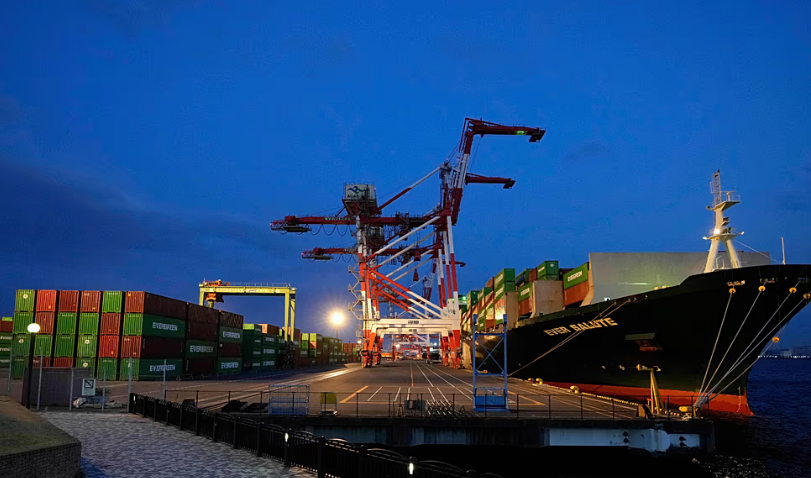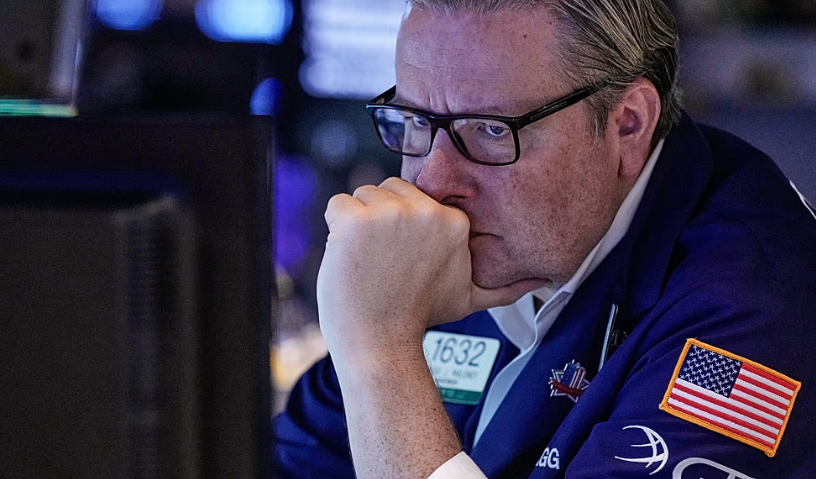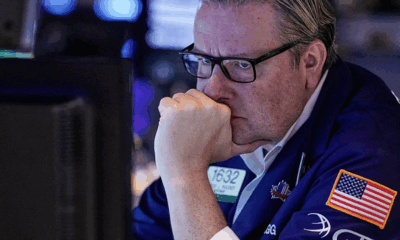Business
EU Agrees to Landmark Food Waste and Fast Fashion Reforms
After intense overnight negotiations, the Polish presidency of the EU Council announced a breakthrough agreement on legally binding food waste reduction targets and measures to curb throwaway fashion culture. The reforms, part of changes to the EU Waste Framework Directive, mark a major step in tackling Europe’s growing waste problem.
Legally Binding Targets to Cut Food Waste
For the first time, the EU has set mandatory food waste reduction targets for all member states. By 2030, food retailers, restaurants, caterers, and households will need to cut waste by 30%, while food processors and manufacturers must achieve a 10% reduction. These targets are based on average waste levels from 2020 to 2023.
With 59 million tonnes of food wasted annually, equivalent to €132 billion in losses, policymakers say urgent action is needed. The agreement follows pressure from environmental groups and sustainability advocates, who have long pushed for stronger EU-wide commitments on food waste.
Tackling Fast Fashion and Textile Waste
Alongside food waste measures, new regulations targeting the fashion industry have been introduced. Under the revised directive, textile producers and fashion brands must pay fees based on the sustainability and recyclability of their products. This Extended Producer Responsibility (EPR) system aims to discourage fast fashion, particularly the sale of cheap, disposable clothing often found on online platforms.
The law also allows EU governments to adjust fees based on garment durability, penalizing brands that promote excessive consumption and short-lived products. The text specifically calls out aggressive marketing tactics that encourage consumers to discard clothing before it wears out, labeling such practices as contributors to “overgeneration of waste.”
Additional criteria will consider factors such as a retailer’s product range, availability of repair services, and incentives for sustainable purchasing.
Mixed Reactions from Campaigners and Lawmakers
While anti-waste activists welcomed the reforms, some criticized the targets as falling short of existing global commitments. Theresa Mörsen, policy officer at Zero Waste Europe, pointed out that the EU pledged a 50% reduction in food waste under the UN Sustainable Development Goals (SDGs).
“This deal is a step forward, but it doesn’t match the ambition we need,” Mörsen said. She also noted that 11% of food waste occurs before products even leave the farm, an issue not addressed in the new targets.
Similarly, while she praised the textile waste action, Mörsen said it lacked concrete targets for circularity, unlike established policies in France and the Netherlands.
Farmers Exempt from Food Waste Cuts
The deal’s passage through the European Parliament was led by Polish MEP Anna Zalewska of the right-wing ECR group, who highlighted her success in ensuring that farmers were exempt from the new obligations.
“We ensured that food waste reduction policies are realistic and feasible for member states, while protecting the agricultural sector from unnecessary burdens,” Zalewska said.
The agreement is provisional and will require final approval from EU ministers at an upcoming Council summit—a step typically seen as a formality. If formally adopted, the new regulations will significantly reshape how food waste and textile disposal are handled across the European Union.
Business
Trump Highlights McDonald’s in Economic Message as Beef Prices Rise

President Donald Trump used a speech at the McDonald’s Impact Summit on Monday to cast himself as a champion of affordability, even as beef prices continue to rise for U.S. consumers.
Trump praised McDonald’s as “one of the most successful companies in the history of the world” and thanked the fast-food chain for lowering prices. His remarks came amid data showing the average price of ground beef reached $6.32 per pound in September, up about 13 percent from a year earlier.
The president also referenced the Big Mac Index, a widely recognized, though informal, measure of inflation. According to the latest Economist reading, a U.S. Big Mac cost $6.01 in July, up from $5.69 a year earlier and $5.15 three years ago. The index compares Big Mac prices across countries to illustrate changes in purchasing power.
“I’m honoured to stand before you as the very first former McDonald’s fry cook ever to become president of the United States,” Trump told McDonald’s franchise representatives in Washington. He highlighted a brief stint working behind the counter, a reference used throughout his 2024 campaign.
Trump also recalled serving McDonald’s on the campaign trail from his private plane, Trump Force One, and said he once made Robert F. Kennedy Jr. try a meal at the chain. In addition, he mentioned tech industry figures, thanking Sundar Pichai and Sergey Brin for acknowledging his McDonald’s-themed campaign skit, which he described as receiving “more hits than anything in the history of Google.”
The president’s remarks tied the fast-food chain to his economic message, emphasizing support for small businesses and affordable dining options. “As president, I’m fighting every day to support small businesses like yours… we’re making tremendous progress,” Trump said, addressing the franchisees in attendance.
Despite Trump’s framing, household budgets continue to feel the impact of higher prices. While inflation has eased somewhat since post-pandemic peaks, many consumers still pay more for everyday goods such as beef and coffee than in previous years. The U.S. Bureau of Labor Statistics reported that the Consumer Price Index for All Urban Consumers (CPI-U) rose 0.3 percent in September after increasing 0.4 percent in August.
Trump’s use of McDonald’s in his speech underscores the chain’s symbolic role as an American institution and a gauge of everyday affordability. By linking his message to the familiar restaurant brand, the president sought to present himself as closely connected to working-class concerns while highlighting ongoing economic initiatives.
Business
Japan’s Economy Contracts as U.S. Tariffs Hit Exports, Posing Early Test for New Prime Minister

Japan’s economy recorded a sharp slowdown in the July–September quarter, contracting for the first time in a year and a half as U.S. trade tariffs weighed heavily on exports. Government figures released on Monday showed an annualised decline of 1.8%, driven largely by weakened overseas demand after Washington imposed new duties on Japanese goods.
While the downturn was significant, it was not as steep as the 2.6% drop projected by economists. On a quarter-to-quarter basis, gross domestic product slipped 0.4%, ending six straight quarters of expansion and signalling a tougher economic landscape for recently appointed Prime Minister Sanae Takaichi.
Exports recorded one of the sharpest declines of the quarter, falling 1.2% from the previous period. The government noted that some firms rushed shipments earlier in the year to get ahead of tariff deadlines, which boosted earlier export data but resulted in weaker numbers for the autumn quarter. On an annualised basis, exports tumbled 4.5%.
Imports were slightly lower as well, dipping 0.1%, while private consumption — a key driver of the domestic economy — inched up by the same margin. Economists say the modest rise in household spending is not enough to offset the strain placed on the country’s major industries.
The tariff pressures stem from measures introduced by U.S. President Donald Trump, who has implemented a 15% duty on nearly all Japanese imports. Although this marks a reduction from the previous 25% rate, the impact has been severe for Japan’s export-heavy economy. Automakers such as Toyota Motor Corp. have long been central to Japan’s global trade profile, though many have built factories abroad to reduce exposure to such trade barriers.
The latest GDP results add to the mounting challenges facing Takaichi, who assumed office in October. Alongside the economic risks, her government is navigating rising diplomatic tensions with China. Earlier this month, the prime minister stated that Japan may consider military action if Beijing launches an attack on Taiwan, prompting sharp reactions from Chinese officials.
Talks between diplomats from both countries are scheduled to take place on Tuesday, with economic stability and regional security expected to dominate the agenda.
The combination of trade pressures, geopolitical strain and a fragile domestic recovery places Japan at a sensitive moment, with policymakers now under heightened pressure to stabilise growth in the months ahead.
Business
Global Stocks Fall as Tech Valuations and Fed Rate Uncertainty Weigh on Markets

Global equities declined on Friday as investors grew cautious over high valuations in technology and AI sectors, coupled with uncertainty about whether the US Federal Reserve will deliver further interest-rate cuts. European markets opened sharply lower following losses in Asian shares and a drop on Wall Street on Thursday.
“Markets are down across the board as investors fret about cracks in the narrative that’s driven the mother of all tech rallies over the past few years,” said Dan Coatsworth, head of markets at AJ Bell. He highlighted concerns over elevated equity prices and heavy spending on AI amid signs of a fragile labor market.
In Europe, UK government bond yields surged after reports that Chancellor Rachel Reeves had abandoned plans to raise income taxes in this month’s Autumn Budget, raising questions about a potential fiscal shortfall. The ten-year gilt yield climbed above 4.54% before easing slightly. Bank shares were among the worst performers on the FTSE 100, which fell more than 1.1% by 11:00 CET. Other European indices also declined, with the Stoxx 600 down nearly 1%, Germany’s DAX off 0.7%, France’s CAC 40 down 0.7%, Madrid’s benchmark losing 1.2% and Milan’s index down 1%.
Some companies bucked the overall trend. Luxury group Richemont rose 7.5% after exceeding first-half profit expectations, and Siemens Energy gained more than 10% after raising its 2028 financial targets. In contrast, Ubisoft delayed its six-month financial report, triggering a suspension in trading after an earlier drop of over 8%.
Wall Street had suffered a sharp decline on Thursday, with the S&P 500 and the Dow Jones Industrial Average both down 1.7%, and the Nasdaq falling 2.3%. Technology and AI-linked stocks experienced heavy selling, with Nvidia down 3.6%, Super Micro Computer off 7.4%, Palantir down 6.5%, Broadcom losing 4.3%, and Oracle sliding more than 4%. The sector’s rapid gains this year have drawn comparisons with the dot-com boom, prompting questions about the sustainability of current valuations.
Asian markets also reflected the cautious mood. China reported factory output growth at 4.9% year-on-year in October, the slowest in 14 months and below expectations. Weakness in fixed-asset investment, especially in the property sector, added to concerns. South Korea’s Kospi fell 3.8%, with Samsung Electronics down 5.5% and SK Hynix off 8.5%. Taiwan’s Taiex dropped 1.8%, Japan’s Nikkei 225 lost nearly 1.8%, and Hong Kong’s Hang Seng slipped 2%. The Shanghai Composite declined 1%.
Oil prices rose, with Brent crude up 1.6% at $63.99 per barrel and West Texas Intermediate climbing 1.8% to $59.76. The dollar strengthened slightly against the yen at ¥154.55, while the euro traded at $1.1637.
Investors continue to weigh the risks of stretched valuations in technology against uncertain monetary policy, leaving markets cautious as they head into the final months of 2025.
-

 Entertainment1 year ago
Entertainment1 year agoMeta Acquires Tilda Swinton VR Doc ‘Impulse: Playing With Reality’
-

 Business1 year ago
Business1 year agoSaudi Arabia’s Model for Sustainable Aviation Practices
-

 Business1 year ago
Business1 year agoRecent Developments in Small Business Taxes
-

 Home Improvement12 months ago
Home Improvement12 months agoEffective Drain Cleaning: A Key to a Healthy Plumbing System
-

 Politics1 year ago
Politics1 year agoWho was Ebrahim Raisi and his status in Iranian Politics?
-

 Business1 year ago
Business1 year agoCarrectly: Revolutionizing Car Care in Chicago
-

 Business1 year ago
Business1 year agoSaudi Arabia: Foreign Direct Investment Rises by 5.6% in Q1
-

 Sports1 year ago
Sports1 year agoKeely Hodgkinson Wins Britain’s First Athletics Gold at Paris Olympics in 800m


























